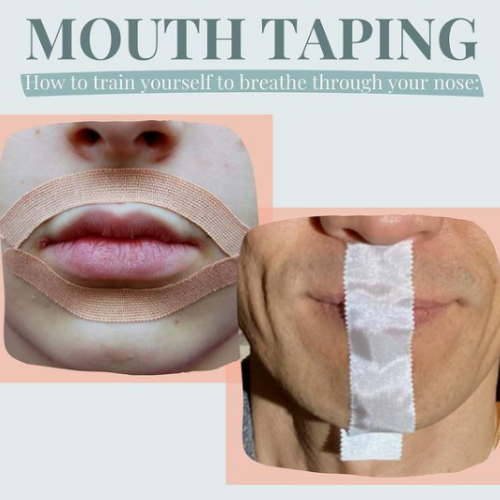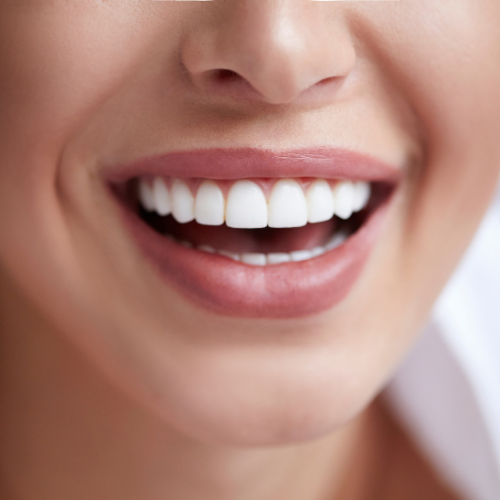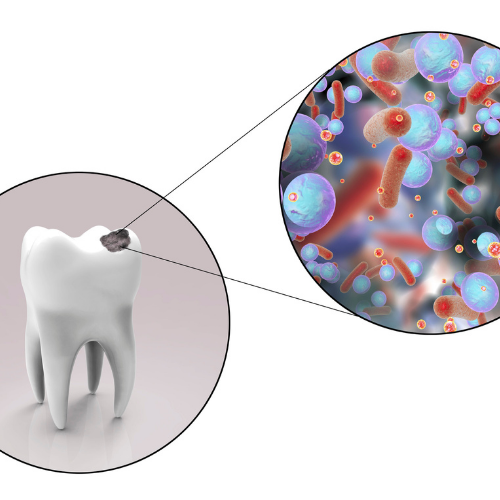Mood, stress, posture, and TMJ neck pain are linked. Take a look at the image below to see by just how much. This can contribute significantly to neck and shoulder pain. In addition, for some, it can lead to other issues such as headaches, poor posture, trouble with sleep, TMJ and more. Pain relief is especially relevant
read more
How To Mouth Tape What Is Mouth Taping? Breathing is something we all do, everyday. But there is a correct way to breathe, and that is through the nose!! 👃🏽 Mouth taping is a home remedy that will help you to breathe through your nose. This is during the day and at night when you
read more
Teething on Babies What Is Teething? Is your child currently experiencing teething? This process can be challenging for parent and baby. 👶🏻 Symptoms include: 🦷Swollen gums🦷Fussiness🦷Drooling🦷Difficulty Sleeping🦷Gnawing on Things🦷Pulling on Ears🦷Rubbing the Face Remember, once that first tooth is in, it’s time to start seeing a dentist! Teething On Babies The earliest stage teething occurs
read more
“Alone we can do so little; together we can do so much.” -Helen Keller Family Dental Centre is Open for Service Family Dental Centre has received clearance to open for service from the Royal College of Dental Surgeons. At this time, please read our safety protocols below and schedule an appointment by phone or email.
read more
Head-Jaw-Neck-Back Pain Connection Alignment Do you have a headache or neck, shoulder, and/or back pain? Do you feel tired when you wake up? Sleepy during the day? Your mouth may be playing a minor or major role in how you are feeling. The Alignment of your head, bite and spine can relieve pain and fatigue
read more
What Is A Tongue Tie? Tongue-tie (ankyloglossia) is a condition present at birth that restricts the tongue’s range of motion. If it is not corrected as an infant, a person can grow to childhood and even adulthood without having it addressed. A tongue-tie is an unusually short, thick or tight band of tissue (lingual frenulum)
read more
Simply answer the following questions to determine if your baby is tongue tied. Is the baby having difficulties in gaining weight? Do your breasts hurt? (sore/cracked nipples)? Is the baby feeding frequently? If you answered yes, to any of these questions your baby may be tongue tied. What is a Tongue tie? A tongue tie
read more
Whitening procedures have effectively restored the smile of people with stained, dull, or discolored teeth. The darker tissue of your teeth, the dentin, can become exposed as the outer layer of enamel is worn away by the effects of aging or things like caffeine and tobacco. Food particles are naturally attracted to a tooth’s enamel
read more
Plaque is an insidious substance—a colorless, sticky film—that blankets your teeth and creates an environment in which bacteria erode tooth enamel, cause gum irritation, infection in inner structures such as pulp and the roots, and in extreme cases, tooth loss. Some of the biggest culprits causing plaque are foods rich in sugar and carbohydrates, including
read more
Plaque is an insidious substance—a colorless, sticky film—that blankets your teeth and creates an environment in which bacteria erode tooth enamel, cause gum irritation, infection in inner structures such as pulp and the roots, and in extreme cases, tooth loss. Some of the biggest culprits causing plaque are foods rich in sugar and carbohydrates, including
read more



















